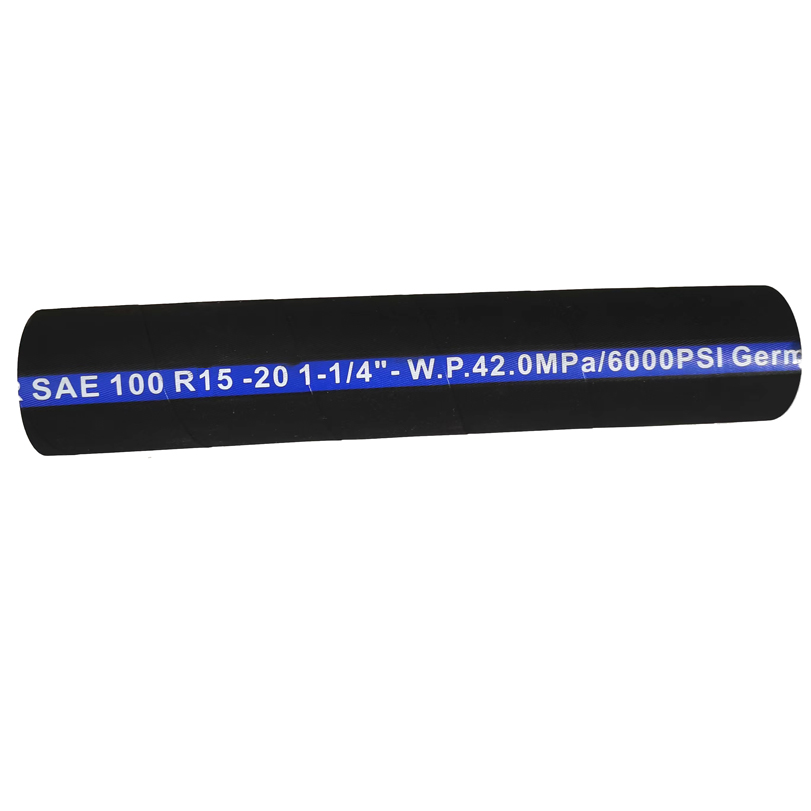335345435
Nov . 08, 2024 00:06 Back to list
Overview of Bulk Hydraulic Fittings and Their Applications in Industrial Systems
Understanding Bulk Hydraulic Fittings A Comprehensive Guide
Hydraulic systems are pivotal in a vast array of industries, from manufacturing and automotive to agriculture and aerospace. At the heart of these systems lies a critical component hydraulic fittings. Among these, bulk hydraulic fittings play a significant role, providing the necessary connections that ensure fluid flows efficiently through hydraulic circuits. In this article, we delve into what bulk hydraulic fittings are, their types, applications, and why selecting the right fitting is crucial for system performance.
What are Bulk Hydraulic Fittings?
Bulk hydraulic fittings are standardized connectors used to link hydraulic hoses and pipes within a fluid power system. These fittings are typically sold in bulk quantities, allowing manufacturers and industrial users to purchase them in larger lots, reducing costs and ensuring they have a ready supply for assembly or repairs. Unlike specialized or custom fittings, bulk fittings are designed to meet specific industry standards, making them versatile for various applications.
Types of Bulk Hydraulic Fittings
1. Pipe Fittings These fittings are used to connect pipes and tubes in hydraulic systems. Common types include threaded fittings (such as NPT or BSP), which can easily connect various pipe sizes and orientations.
2. Hose Fittings Designed specifically for hydraulic hoses, these fittings typically feature a crimped or clamp design that secures the hose to the fitting. They come in various sizes and can accommodate different types of hoses, including those made from rubber, thermoplastic, or metal.
3. Flange Fittings These fittings consist of a flat surface used to connect pipes at right angles. Flange fittings are often utilized in high-pressure applications due to their robustness and leak-proof capabilities.
4. Quick Connect Couplings These allow for easy connection and disconnection of hoses and pipes without the need for tools. Quick connect couplings are advantageous in situations where equipment needs to be frequently connected and disconnected.
5. Adapters These are used to connect different types or sizes of fittings, ensuring compatibility within a hydraulic system. Adapters can convert between male and female threads, different sizes, or even different types of connections.
Applications of Bulk Hydraulic Fittings
Bulk hydraulic fittings find their use in a multitude of applications across different sectors
bulk hydraulic fittings

- Construction Equipment Hydraulic systems are integral to the operation of construction machinery, and bulk fittings ensure the reliable flow of hydraulic fluid under demanding conditions
.- Agricultural Machinery From tractors to harvesters, hydraulic systems in farm equipment rely on bulk fittings to facilitate tasks such as steering, lifting, and powering implements.
- Manufacturing Equipment In factories, hydraulic systems are utilized for machining, pressing, and assembly operations, all of which require sturdy fittings to maintain efficiency and prevent leaks.
- Transportation Hydraulic systems in vehicles, including trucks and buses, employ bulk fittings for brake systems, steering, and lift mechanisms.
Importance of Selecting the Right Bulk Fittings
Choosing the appropriate bulk hydraulic fitting is critical for several reasons
- Safety Hydraulic systems operate under high pressures, and improper fittings can lead to catastrophic failures, resulting in injury or equipment damage.
- System Efficiency The right fittings minimize fluid loss due to leaks, ensuring that the hydraulic system operates at its peak efficiency.
- Cost-Effectiveness While it may be tempting to opt for the cheapest fittings, investing in quality bulk fittings ultimately saves costs associated with repairs, downtime, and fluid loss.
- Compatibility and Certification It is essential to select fittings that meet industry standards and are compatible with other components in the hydraulic system to ensure longevity and reliability.
Conclusion
Bulk hydraulic fittings are an essential part of hydraulic systems, ensuring the secure and efficient flow of hydraulic fluids across various industries. By understanding the different types and applications of these fittings, as well as the importance of selecting the right ones, users can enhance the performance and reliability of their hydraulic systems. Investing time in proper fitting selection pays dividends in safety, efficiency, and overall system longevity, making it a crucial aspect of hydraulic system design and maintenance.
-
SAE 100 R17 Black Smooth Cover Hydraulic Hose
NewsMar.07,2025
-
SAE 100 R17 Black Smooth Cover Hydraulic Hose
NewsMar.07,2025
-
SAE 100 R17 Black Smooth Cover Hydraulic Hose
NewsMar.07,2025
-
SAE 100 R17 Black Smooth Cover Hydraulic Hose
NewsMar.07,2025
-
SAE 100 R17 Black Smooth Cover Hydraulic Hose
NewsMar.07,2025
-
steel wire braided hydraulic hose
NewsMar.07,2025



